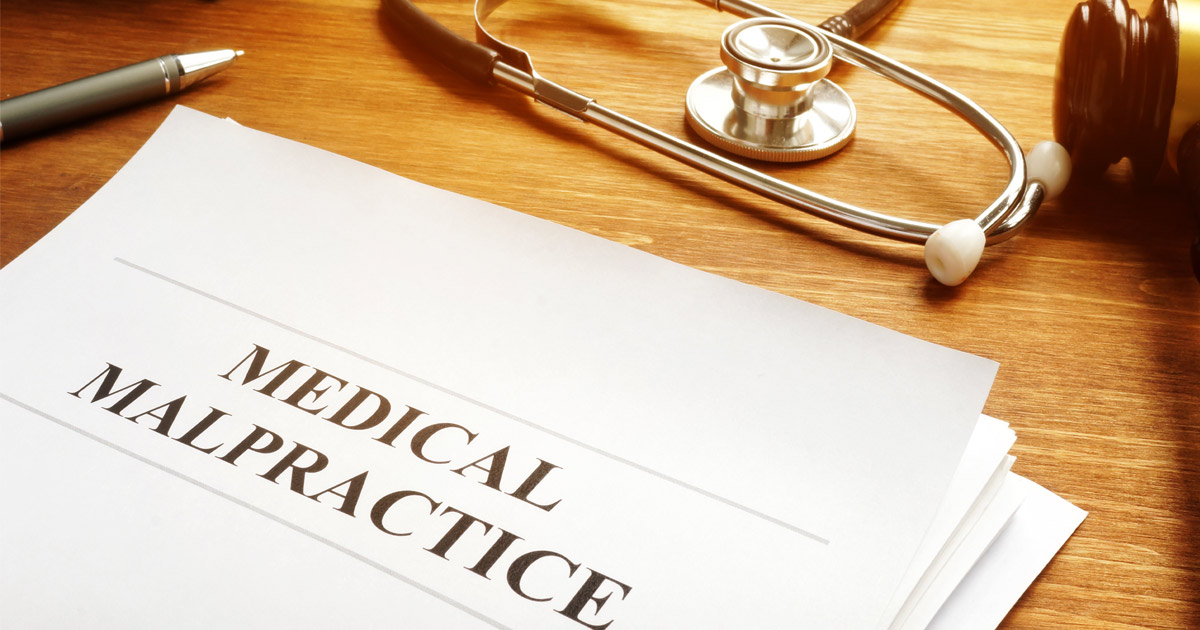Can I File a Medical Malpractice Lawsuit for a Maternal Birth Injury?
May 11, 2021
Planning, anticipating, and experiencing a pregnancy can be one of the most joyous events in a woman’s life. However, when something unexpected occurs during the pregnancy or during the delivery process, it can cause a range of complications that can affect the health of the mother or the baby, or both. Although some complications are unavoidable and are not the fault of the doctor, nurse, midwife, or other health care provider responsible for the pregnant woman’s care, others are preventable errors that are the result of medical negligence. These are particularly devastating because the resulting injury could have been prevented if the medical professional provided the medical standard of care. If an expectant mother suffers a serious injury during the childbirth process, a skilled and dedicated lawyer experienced in medical malpractice will determine whether negligence was involved and recommend the best legal course of action going forward.
What are the Common Causes of Birth Injuries?
Health care professionals owe a duty of care to their patients, which means they have a responsibility to provide the medical standard of care that another reasonably experienced doctor with a similar background would provide under similar circumstances. If the health care provider failed to provide the standard of care, the patient may have grounds for a medical malpractice lawsuit. The following are examples of medical negligence that often result in maternal birth injuries:
- Failure to detect potential health complications in prenatal ultrasounds, genetic screenings, and other tests
- Failure to detect common signs of preeclampsia, eclampsia, and other complications that can occur during pregnancy
- Failure to induce labor if it becomes necessary
- Failure to maneuver the position of the baby if it will result in a safer delivery
- Improper use of vacuum extractors and forceps
- Failure to proceed with a cesarean section if it becomes necessary
- Failure to monitor the mother’s health after delivery
What are the Common Birth Injuries that Mothers Suffer?
Even under the best of circumstances, the childbirth process is overwhelming, intense, and often quite painful, particularly if the expectant mother prefers to give birth naturally and without any pain medication. In addition to the physical toll the childbirth process can take on a woman’s body, there are a range of injuries that can also occur, some of which are preventable if the doctor is properly monitoring the mother’s condition and taking the necessary steps to prevent common injuries or prevent minor injuries from becoming serious or life-threatening. The following are examples of common injuries that can occur during the delivery process:
- Vaginal tearing: It is common for women to suffer a degree of tearing during childbirth. In most cases, the tearing is minor and heals on its own following delivery. If the circumstances warrant it, the obstetrician-gynecologist or midwife may perform an episiotomy, which is a small incision to the vagina, which may reduce the risk of an uncontrolled tearing of the perineum. However, more serious tearing can affect the vulva and the muscles of the anus. In these cases, surgery may be required to repair the tear. This results in a longer recovery time and can cause extreme discomfort for the woman. There are a number of factors that can increase the risk of vaginal tearing, including the following:
– Prolonged labor
– The size of the baby
– The baby has shoulder dystocia
– Induced labor
– Assisted delivery, including the use of forceps - Postpartum hemorrhage: A certain degree of vaginal bleeding is expected for several weeks following delivery. Bleeding is heaviest during the first few days after the baby is born and gradually becomes lighter over time. However, if the bleeding is abnormally heavy during the first 24 hours after delivery, this can be a sign of primary postpartum hemorrhage, which can be extremely serious and even life-threatening if it is not treated immediately. A secondary postpartum hemorrhage occurs after the first 24 hours following delivery and is also very serious, as it often means that the mother is suffering from an infection from the delivery.
- Ruptured uterus: This occurs when there is a tear in the uterus and is particularly common in women who previously had a cesarean section. This is an emergency medical situation that requires surgical intervention. Ideally, the baby will be delivered safely via cesarean section, and the medical team will repair the rupture. However, if the rupture cannot be repaired and the bleeding cannot be stopped, an emergency hysterectomy may be necessary to control the bleeding and save the mother’s life. Women who suffered a ruptured uterus may become pregnant again, but it is highly likely that they will need to deliver any future pregnancies by cesarean section.
- Prolapsed uterus: This occurs when the pelvic floor muscles and ligaments stretch and can no longer support the uterus. This causes the uterus to drop into the vaginal canal. This is particularly common after long, difficult deliveries or if the baby was large in size. Although a prolapsed uterus is not life-threatening, it can have a significant impact on the woman’s quality of life. The following are examples of common symptoms associated with a prolapsed uterus:
– Urinary incontinence
– Pain during sexual intercourse
– Feeling of heaviness in the vaginal or perineal areaOftentimes, pelvic floor exercises can help manage a prolapsed uterus. However, if the condition is serious, it may require a surgical procedure to repair the pelvic floor muscles. In more extreme cases, a hysterectomy may be required, in which case, the woman will be unable to have any more children. - Surgical anesthesia complications: Anesthesiologists are responsible for administering the precise amount of medication to control pain. In addition, they closely monitor the patient’s vital signs during the surgical procedure. Anesthesia complications from too much or too little anesthesia can cause serious health problems, including nausea, vomiting, respiratory issues, stroke, and brain damage.
- Postnatal depression: In addition to the hormonal changes and other factors that can cause postpartum depression, the mental trauma of a birth injury can also cause the mother to experience postnatal depression or even post-traumatic stress disorder (PTSD). Common symptoms of these conditions include the following:
– Difficulty bonding with the new baby
– Avoiding reminders of the delivery, including the hospital where the baby was born, sharing details about the baby’s birth, and refusing to look at pictures from the day of the birth
– Feelings of isolation, guilt, and failure, or that the injury was somehow the mother’s fault
What Impact Do Birth Injuries Have on Women?
Birth injuries can be physically and emotionally devastating for a new mother. Depending on the nature and severity of the injury, the mother may suffer a range of complications, including the following:
Physical complications:
- Incontinence, or lack or bladder control
- Rectovaginal fistula, which is a serious tear that causes a hole in the wall between the vagina and the anus
- Pain and discomfort when sitting for a long period
- Pain during intercourse
- Burning sensation when urinating
Emotional complications:
- Difficulty bonding with the baby
- Feeling as though the birth injury was the mother’s fault
- Severe postpartum depression
- PTSD following a traumatic birth that resulted in a maternal birth injury
- Inability to return to work if the mother is suffering from extreme postpartum depression
- Stress to the marital relationship
How Do I Prove that My Health Care Provider was Negligent?
In order for the patient to prove that a health care provider was negligent, she must be able to prove the following:
- Establish the appropriate medical standard of care that is expected in the situation that caused the mother to be injured.
- Determine whether another reasonably skilled doctor would have handled the situation differently.
- Determine whether the doctor’s deviation from the standard of care caused the patient’s injury.
- Prove that the injury resulted in damages.
What Damages May I Receive in a Medical Malpractice Lawsuit?
Birth injuries can be physically and emotionally devastating, particularly if the mother’s health is compromised following the delivery. If the patient is able to prove that the health care provider was negligent, she may be entitled to the following damages:
Economic damages:
- Medical expenses associated with prenatal care, hospital bills, prescription medications, and follow-up appointments
- Projected medical expenses, including medications, rehabilitation, and home modifications that may be necessary
- Lost income
Non-economic damages:
- Pain and suffering
- Loss of consortium
- Loss of quality of life
In Maryland, the cap on non-economic damages for 2021 is $845,000. There is no cap for economic damages.
Baltimore Medical Malpractice Lawyers at LeViness, Tolzman & Hamilton Advocate for Victims of Maternal Birth Injuries
If you or a loved one suffered a maternal birth injury during or immediately following the childbirth process, it is in your best interest to contact the Baltimore medical malpractice lawyers at LeViness, Tolzman & Hamilton as soon as possible. We will conduct a thorough investigation to determine whether the health care provider responsible for your care was negligent in any way. Our dedicated and compassionate legal team understands how devastating birth injuries can be, particularly if the injury involves a lengthy recovery. We will assist you with every phase of the claims process and ensure that you receive the maximum financial compensation you deserve for your injury. To schedule a free, confidential consultation, call us today at 800-547-4LAW (4529) or contact us online.
Our offices are conveniently located in Baltimore, Columbia, Glen Burnie, and Prince George’s County, where we represent victims throughout Maryland, including those in Anne Arundel County, Carroll County, Harford County, Howard County, Montgomery County, Prince George’s County, Queen Anne’s County, Maryland’s Western Counties, Southern Maryland and the Eastern Shore, as well as the communities of Catonsville, Essex, Halethorpe, Middle River, Rosedale, Gwynn Oak, Brooklandville, Dundalk, Pikesville, Parkville, Nottingham, Windsor Mill, Lutherville, Timonium, Sparrows Point, Ridgewood, and Elkridge.






